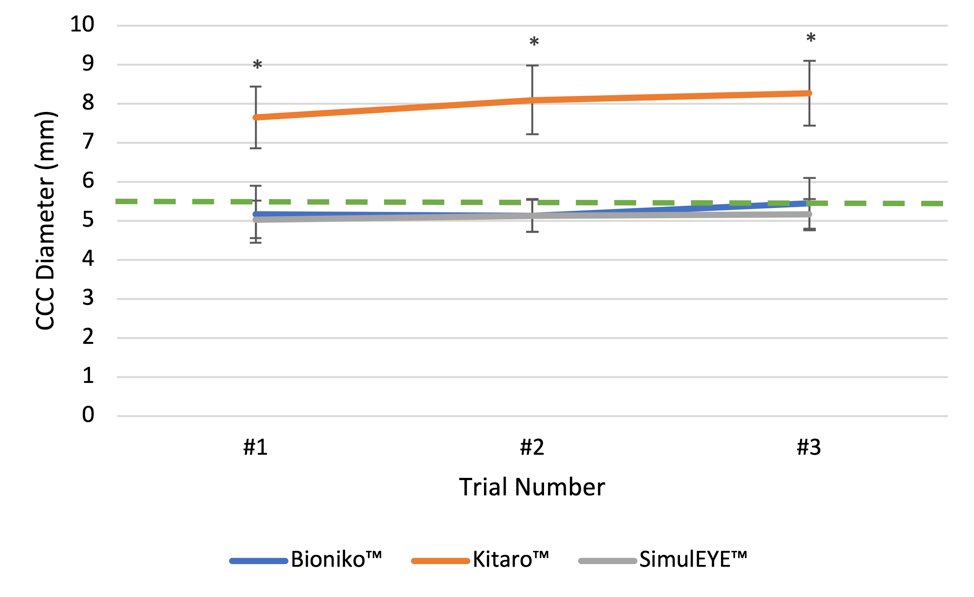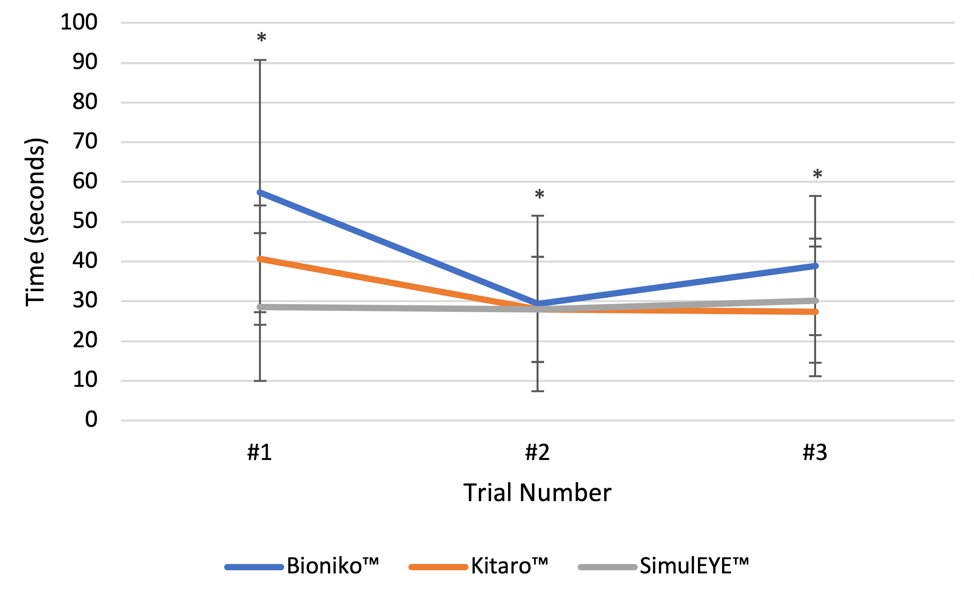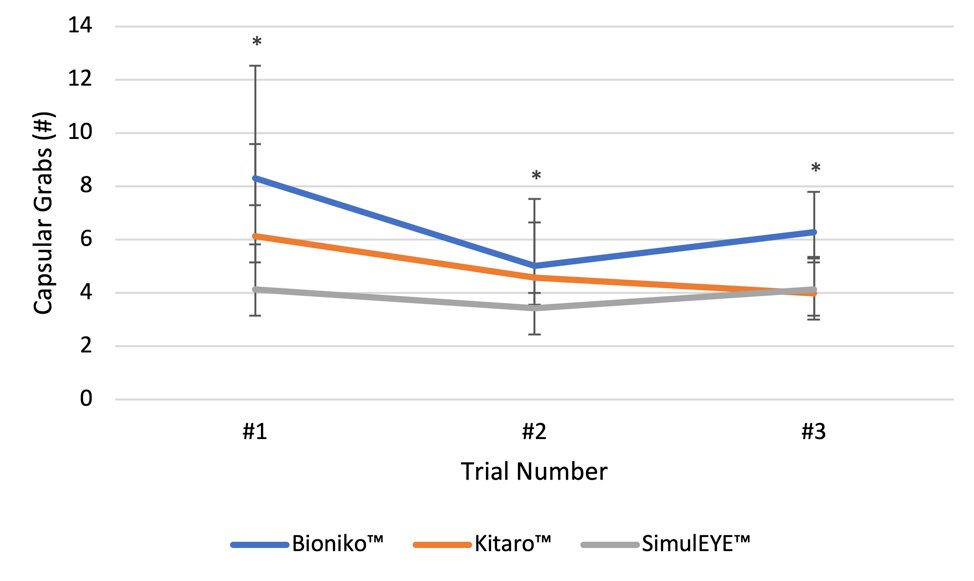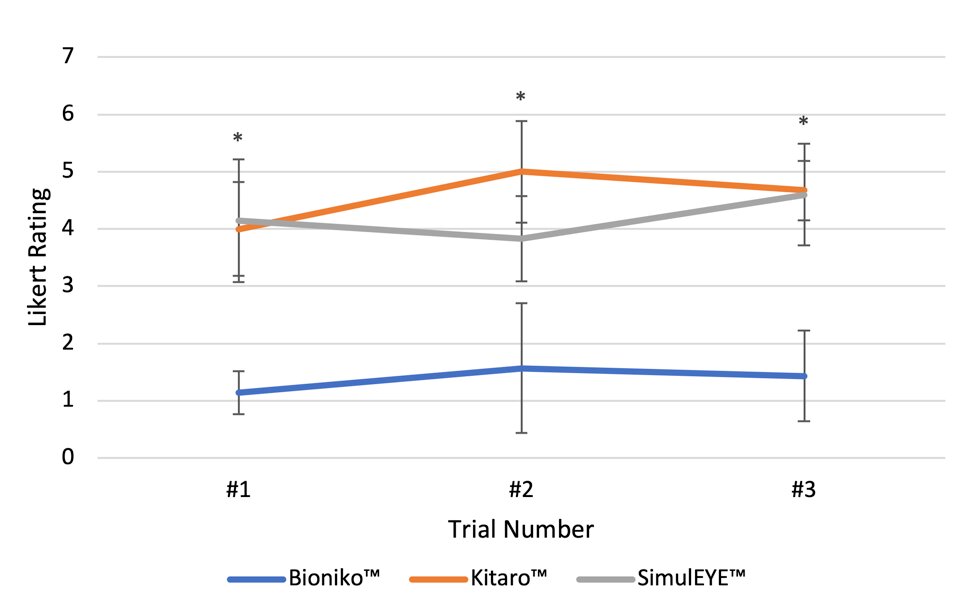Three Cheers for Three CCC Simulators
Capsulorhexis training devices differ in their similarity to actual surgery. Roibeard Ó hÉineacháin reports

Roibeard O’hEineachain
Published: Tuesday, August 31, 2021
 Figure 1: CCC size (mm). Surgeons created the 5.5mm-sized CCC most accurately on Bioniko™ and SimulEYE™. The dashed green line indicates the tasked CCC size of 5.5mm. The CCC on *Kitaro™ was significantly larger than on Bioniko™ and SimulEye™ (p<0.0001) across all trials.
Figure 1: CCC size (mm). Surgeons created the 5.5mm-sized CCC most accurately on Bioniko™ and SimulEYE™. The dashed green line indicates the tasked CCC size of 5.5mm. The CCC on *Kitaro™ was significantly larger than on Bioniko™ and SimulEye™ (p<0.0001) across all trials.
 Figure 2: Duration of CCC (seconds). Surgeons took the longest amount of time to perform the CCC on Bioniko™ compared to Kitaro™ (p=0.02) and SimulEYE™ (p=0.002).
Figure 2: Duration of CCC (seconds). Surgeons took the longest amount of time to perform the CCC on Bioniko™ compared to Kitaro™ (p=0.02) and SimulEYE™ (p=0.002).
 Figure 3: Number of Capsular Grabs: Bioniko™ required a greater number of grabs compared to Kitaro™ p=0.01 and SimulEYE™ (p<0.0001).
Figure 3: Number of Capsular Grabs: Bioniko™ required a greater number of grabs compared to Kitaro™ p=0.01 and SimulEYE™ (p<0.0001).
 Figure 4: Realism of CCC experience based on modified Likert rating (1-7): Surgeons rated the CCC experience on Kitaro™ and SimulEYE™ as more realistic than on Bioniko™ (p<0.0001).
Figure 4: Realism of CCC experience based on modified Likert rating (1-7): Surgeons rated the CCC experience on Kitaro™ and SimulEYE™ as more realistic than on Bioniko™ (p<0.0001).